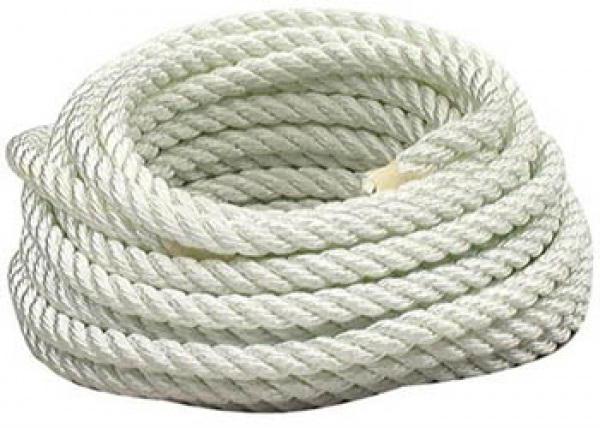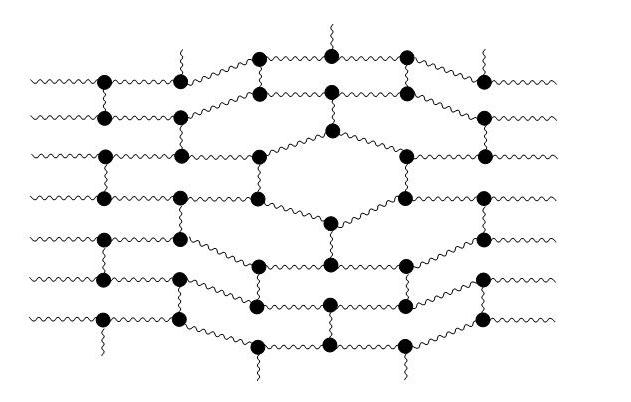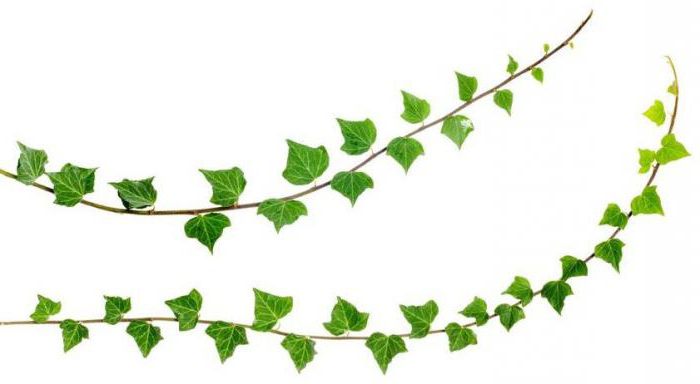One can hardly imagine today's life without polymers - complex synthetic substances that are widely used in various fields of human activity. Polymers are high-molecular compounds of natural or synthetic origin, consisting of monomers connected by chemical bonds. A monomer is a repeating chain link that contains the parent molecule.
Organic macromolecular compounds
Due to its unique properties, high-molecular compounds successfully replace such natural materials as wood, metal, stone in various spheres of life, conquering new fields of application. To systematize such an extensive group of substances, the classification of polymers according to various criteria is adopted. These include composition, production method, spatial configuration, and so on.
The classification of polymers by chemical composition divides them into three groups:
- Organic macromolecular substances.
- Organoelement compounds.
- Inorganic macromolecular compounds.

The largest group is represented by organic IUDs - resins, rubbers, vegetable oils, that is, products of animal as well as plant origin. The macromolecules of these substances in the main chain along with carbon atoms have atoms of oxygen, nitrogen and other elements.
Their properties:
- have the ability to reverse deformation, that is, elasticity at low loads;
- at a small concentration can form viscous solutions;
- change the physical and mechanical characteristics under the influence of a minimum amount of reagent;
- with mechanical action, directional orientation of their macromolecules is possible.
Organoelement compounds
Organoelement IUDs, the macromolecules of which include, in addition to atoms of inorganic elements - silicon, titanium, aluminum - and organic hydrocarbon radicals, are created artificially, and in nature they are not. The classification of polymers divides them, in turn, into three groups.
- The first group is substances in which the main chain is composed of atoms of certain elements surrounded by organic radicals.
- The second group includes substances with a main chain containing alternating carbon atoms and elements such as sulfur, nitrogen and others.
- The third group includes substances with organic backbones surrounded by various organoelemental groups.
 An example is organosilicon compounds, in particular silicone, which has high wear resistance.
An example is organosilicon compounds, in particular silicone, which has high wear resistance.
Inorganic macromolecular compounds in the main chain contain oxides of silicon and metals - magnesium, aluminum or calcium. They have no lateral organic atomic groups. The bonds in the main chains are covalent and ion-covalent, which determines their high strength and heat resistance. These include asbestos, ceramics, silicate glass, quartz.
Carbochain and heterochain Navy
Classification of polymers by the chemical composition of the main polymer chain involves the division of these substances into two large groups.
- Carbochain, in which the main chain of the IUD macromolecule consists only of carbon atoms.
- Hetero-chain, in which other atoms are located in the main chain together with carbon atoms, giving this substance additional properties.
Each of these large groups consists of the following subgroups that differ in the structure of the chain, the number of substituents, their composition, and the number of side branches:
- compounds with saturated bonds in chains, for example, polyethylene or polypropylene;
- polymers with unsaturated bonds in the main chain, for example polybutadiene;
- halogen-substituted macromolecular compounds - teflon;
- polymeric alcohols, an example of which is polyvinyl alcohol;
- IUDs based on derivatives of alcohols, an example is polyvinyl acetate;
- compounds derived from aldehydes and ketones, such as polyacrolein;

- polymers derived from carboxylic acids, of which polyacrylic acid is a representative;
- substances derived from nitriles (PAN);
- macromolecular substances derived from aromatic hydrocarbons, for example polystyrene.
Division by the nature of the heteroatom
The classification of polymers may also depend on the nature of heteroatoms; it includes several groups:
- with oxygen atoms in the main chain - simple and complex polyesters and peroxides;
- compounds with the content in the main chain of nitrogen atoms - polyamines and polyamides;
- substances with oxygen and nitrogen atoms in the main chain, for example, polyurethanes;
- IUDs with sulfur atoms in the main chain - polythioesters and polytetrasulfides;
- compounds in which phosphorus atoms are present in the main chain.
Natural polymers
Currently, the classification of polymers by origin, by chemical nature, which divides them as follows:
- Natural, they are also called biopolymers.
- Artificial substances that are high molecular weight.
- Synthetic compounds.
Natural Navy is the basis of life on Earth. The most important of these are proteins - the "bricks" of living organisms, the monomers of which are amino acids. Proteins are involved in all biochemical reactions of the body, without them the immune system cannot work, blood coagulation processes, formation of bone and muscle tissue, energy conversion work and much more. Without nucleic acids, the storage and transmission of hereditary information is impossible.

Polysaccharides are high molecular weight hydrocarbons that, together with proteins, are involved in metabolism. Classification of polymers by origin allows you to select natural macromolecular substances in a special group.
Artificial and synthetic polymers
Artificial polymers are obtained from natural by various methods of chemical modification to give them the necessary properties. An example is cellulose, from which many plastics are obtained. The classification of polymers by origin characterizes them as artificial substances. Synthetic IUDs are obtained chemically using polymerization or polycondensation reactions. Their properties, and therefore the scope, depend on the length of the macromolecule, that is, on the molecular weight. The larger it is, the stronger the material obtained. The classification of polymers by origin is very convenient. Examples confirm this.
Linear Macromolecules
Any classification of polymers is rather arbitrary, and each has its own drawbacks, since it cannot display all the characteristics of this group of substances. Nevertheless, it helps to systematize them in some way. The classification of polymers in the form of macromolecules presents them in the form of the following three groups:
- linear
- branched;
- spatial, which are also called mesh.
 Long, curved or spiral-shaped chains of linear IUDs give substances some unique properties:
Long, curved or spiral-shaped chains of linear IUDs give substances some unique properties:
- due to the appearance of intermolecular bonds form strong fibers;
- they are capable of large and long, but at the same time reversible deformations;
- an important property is their flexibility;
- upon dissolution, these substances form solutions with high viscosity.
Branched macromolecules
Branched polymers also have a linear structure, but with many side branches shorter than the main one.At the same time, their properties also change:
- the solubility of branched substances is higher than linear, respectively, they form solutions of lower viscosity;
- with an increase in the length of the side chains, the intermolecular forces become weaker, which leads to an increase in the softness and elasticity of the material;
- the higher the degree of branching, the more physical properties of such a substance approach the properties of ordinary low molecular weight compounds.
Three-dimensional macromolecules
Mesh macromolecular compounds are flat (staircase and parquet type) and three-dimensional. Flat rubber includes natural rubber and graphite. In spatial polymers there are cross-linking “bridges” between chains, forming one large three-dimensional macromolecule, which has an extraordinary hardness.
An example is diamond or keratin. Mesh macromolecular compounds are the basis of rubbers, some types of plastics, as well as adhesives and varnishes.
Thermoplastics and thermosets
The classification of polymers by origin and with respect to heating is intended to characterize the behavior of these substances with temperature. Depending on the processes that occur during heating, different results are obtained. If the intermolecular interaction weakens and the kinetic energy of the molecules increases, then the substance softens, becoming a viscous state. When the temperature decreases, it returns to its normal state - its chemical nature remains unchanged. Such substances are called thermoplastic polymers, for example polyethylene.
Another group of compounds is called thermosetting. The mechanism of processes occurring in them during heating is completely different. In the presence of double bonds or functional groups, they interact with each other, changing the chemical nature of the substance. It cannot restore its original shape upon cooling. An example is various resins.
Polymerization Method
Another classification of polymers is by the method of preparation. There are such ways to get an IUD:
- Polymerization, which can take place using the ionic reaction mechanism and free radical.
- Polycondensation
Polymerization is the process of formation of macromolecules by sequential connection of monomer units. They are usually low molecular weight substances with multiple bonds and cyclic groups. During the reaction, a double bond or bond in the cyclic group breaks and new ones form between these monomers. If monomers of the same species are involved in the reaction, it is called homopolymerization. When using different types of monomers, a copolymerization reaction occurs.

The polymerization reaction is a chain reaction that can occur spontaneously, however, active substances are used to accelerate it. With the free radical mechanism, the process proceeds in several stages:
- Initiation. At this stage, by light, heat, chemical, or some other kind of influence, active groups — radicals — are formed in the system.
- Chain length growth. This stage is characterized by the addition of the following monomers to radicals to form new radicals.
- An open chain is obtained by the interaction of active groups with the formation of inactive macromolecules.
It is impossible to control the moment of chain termination, and therefore the resulting macromolecules differ in different molecular weights.
The principle of the ionic mechanism of the polymerization reaction is the same as that of the free radical. But here, cations and anions act as active centers; therefore, cationic and anionic polymerization are distinguished. In industry, the most important polymers are obtained by radical polymerization: polyethylene, polystyrene and many others. Ion polymerization is used in the production of synthetic rubbers.
Polycondensation
The process of formation of a high molecular weight compound with separation of some low molecular weight substances as a by-product is polycondensation, which differs from polymerization in that the elemental composition of the resulting macromolecule does not correspond to the composition of the initial substances involved in the reaction. Only compounds with functional groups can participate in them, which, interacting, split the molecule of a simple substance and form a new bond. Polycondensation of bifunctional compounds produces linear polymers. When polyfunctional compounds are involved in the reaction, IUDs with a branched or even spatial structure are formed. The low molecular weight substances formed during the reaction also interact with the intermediate products, causing chain termination. Therefore, it is better to remove them from the reaction zone.

Certain polymers cannot be obtained by known methods of polymerization or polycondensation, since there are no required starting monomers capable of participating in them. In this case, the polymer synthesis is carried out with the participation of high molecular weight compounds containing functional groups that are able to react with each other.
The classification of polymers is becoming more complicated every day, as more and more new types of these amazing substances with predetermined properties appear, and a person no longer thinks of his life without them. However, another problem arises, no less important - the possibility of their easy and cheap disposal. The solution to this problem is very important for the existence of the planet.
